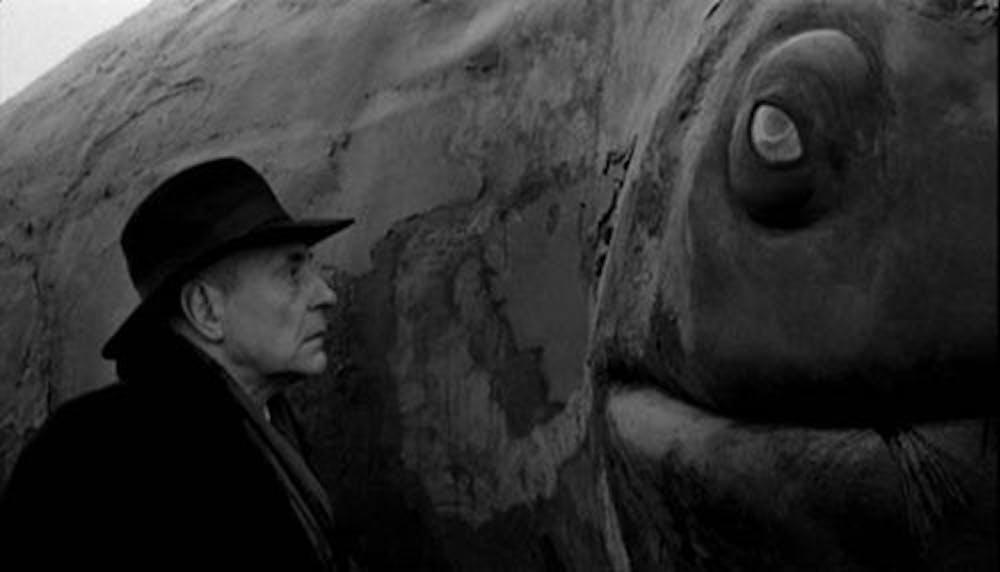As director Bela Tarr points out, Werckmeister Harmonies explores the “boundaries between civilization and barbarism.” While cryptic, his experimental allegory about encroaching fascism is visually stunning and endlessly rewarding.
The film begins in a pub. Janos enlists local drunks to act out the motion of the sun, earth and moon in order to explain the phonomenon of solar eclipses. Though he assures that the resulting darkness is temporary, a more dangerous “eclipse” seems to be overtaking the town. A circus arrives with a huge whale and “the Prince,” a mysterious entity said to possess dark powers. The event draws huge crowds and disrupts the order of the small village; chaos ensues.
The film is most noteworthy for its cinematography. At 145 minutes, it’s told in only 39 shots, the long takes and lush monochrome creating a sense of deep anxiety. Filmed over three years, the film is a labor of love, and contains some of the most complex tracking shots ever attempted in the history of cinema.

